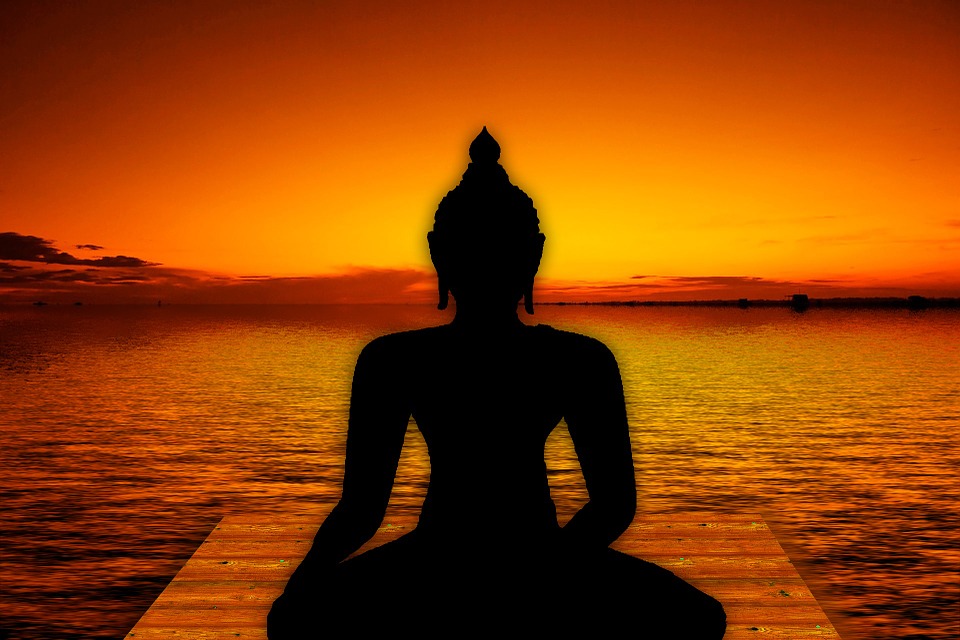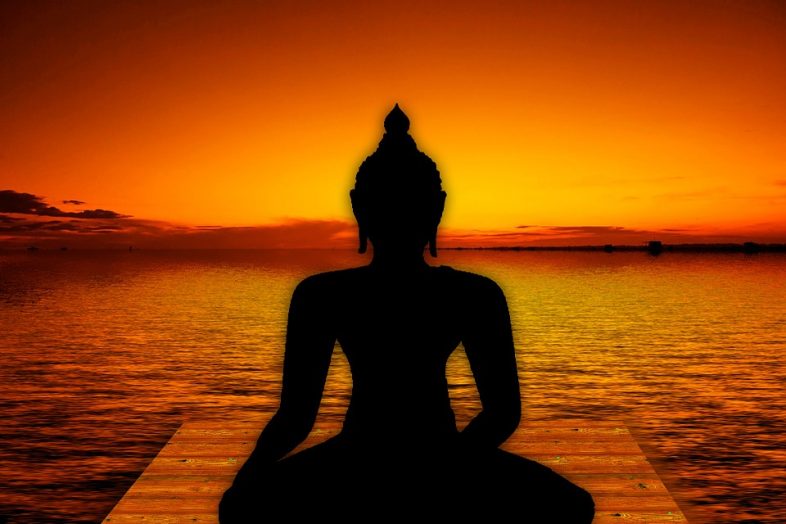Types of Meditation Practices in Buddhist Tradition
Sharp senses and laser focus has always been a defining feature for mankind. Such qualities have enabled our forefathers to protect themselves against all threats and thrive in all situations. Unfortunately, however, there is only a fraction of us who have experienced the full potential of our senses. The stress and anxiety of our routine lives is the culprit in suppressing our senses and hindering their performance. Under such circumstances, research has shown that the ancient Buddhist practices of meditation and mindfulness are highly effective for heightened awareness and activating the natural relaxation response of the body. Considering the potential of meditation for fueling mental health just as working out do physical health, it has been a topic of extensive research for the medical community. It has now been shown that the benefits of meditation go way beyond the temporary relief from stress.
The variations and types of meditations are truly overwhelming. The techniques are rooted in Buddhism but are practiced by people from all over the world. The range of practices has an implication that there is a particular type that is suitable for everyone regardless of the kind of lifestyle that you enjoy or the personality that you have developed. This further minimizes the barrier of following the right technique. If you can’t follow one type of meditation, you can always opt for another one that you find simpler and more convenient for yourself and relish the same benefits. Simply put, meditation and mindfulness is a surefire way of treating your physical, mental, and emotional health with the care and affection that it deserves, regardless of the type that you are practicing.
While there are several different types of meditation, there are 7 which are the most prominent ones in the Buddhist culture. Each of these types is further divided into sub-categories as well. The focus of this article, however, will stick to the 7 conspicuous types of meditation.
The best resource to learn more and practice Mindfulness Meditation.

Mindful Breathing
The first, the simplest, and the most widely known form of meditation are known as mindful breathing. To follow mindful breathing, you are supposed to find a peaceful place that is away from the noise. Once you are in such an environment, take a natural posture like sitting on a comfortable chair, or perhaps on the floor. Put one of your hands on your chest while the other rests on your belly. Close your eyes and take a deep breath slowly. To promote rhythm, many of the instructors recommend counting to three or four while inhaling. Now use your hand on the belly and feel it raising with the air rushing into your body. Make sure that you are keeping your body filled with air for a couple of seconds before starting to exhale. Use your mouth for slow exhalation and use your hands on your chest and on your belly to feel the air moving out and the body coming back to its relaxed position. By focusing entirely on your breaths, the remaining unnecessary, troubling, or otherwise disturbing thoughts are pushed out of your mind. This is what enables you to experience the benefits of sharper focus, better concentration, superior emotional flexibility, and a marked reduction in anxiety.
Vipassana
The second most popular form of meditation is known as Vipassana in the Buddhist culture while it is commonly referred to as body scan or progressive relaxation. To follow the practice, lie straight on the floor in a peaceful environment. Keep your hands comfortably along the side of your body or you can also choose to throw them above your head. Close your eyes and start the process with mindful breathing. Now open your eyes, choose a particular part of your body, such as your hands, and slowly start to clench your fist. Try to gently bring your entire focus to the sensation of your muscles contracting. If you are troubled by the distracting thoughts, be gentle in pushing them away and bring your focus back to the process. The idea here is to achieve the sensory experience; what does it feel like to have your fists clenched? As with mindful breathing, keep your muscles tensed for a few moments, then slowly start to release the pressure and unclench your fist while keeping your focus on the relaxation of your muscles. Continue until your palms are completely open and your hand is in its natural posture. It is recommended to repeat the process with multiple body parts. A common variation of Vipassana includes focusing on the air reaching to all parts of your body while focusing on deep breathing. Vipassana or the body scan is a tried and tested technique that activates the natural relaxation response of the body. This is why it is effective in making you more calm and peaceful. The same feature makes it useful for inducing sleep as well as for temporary relief from chronic pain.
Mindfulness Meditation
The best part of mindfulness meditation is that you can practice it literally anywhere. It doesn’t have to be your home, not your office, not even a secluded place where you can isolate yourself from the noise either. It is a technique that can be practiced right in the middle of the crowd, say for example, while you are waiting for your turn to get your order at McDonald’s.
Mindfulness meditation is simply the name of heightened awareness of your surroundings. More often than not, it requires focusing on a single component of your surroundings, while the more advanced variation may command you to take all of it as a single unit and focus on it. For starters, for instance, you can choose to bring your entire focus to the sound of the falling rain and push everything else in the background. You are not overanalyzing your past, you are not overthinking about the future. You are just present in the moment and are focusing on a positive event that is happening in the now, i-e, the falling rain. As you are focusing on a single event, mindfulness is an indispensable component of almost all other forms of meditation. Take mindful breathing for example, you are focusing entirely on your breath, or Vipassana, you are focusing on the progressive relaxation of your muscles.
Mindfulness has been associated with real-time benefits of satisfaction, both with your personal and professional life, stronger mental capacity to break out of the vicious cycle of negative thoughts, sharper focus, improved memory, and controlled or stabilized emotions.
Metta Meditation
While the Buddhists call it Metta, it is commonly referred to as the loving-kindness meditation. It is primarily used to stimulate the sense of love and kindness not only towards one’s self but also towards the surroundings including the people and even the stressors. It helps to open the specific mental compartments which are crucial for receiving kindness and love. Once your mind is open to such sensations, it is ready to disseminate them in its surroundings.
In most variations of the Metta meditation, coaches recommend to create a personal mantra and repeat it in your head until you start to believe it genuinely. The process is to be continued until the sense of love and kindness can be felt in the attitude by the practitioner. A myriad of positive, loving, kind, and affectionate statements can make up a personal mantra and there is no standard to what everyone should use. You are in charge of deciding what your personal mantra is going to be. As for a recommendation, however, focusing on the things or people that you love, even imagining them in your head works optimally. A simple principle is that anything that can put a smile on your face, anything that brings peace and happiness to you can be used for Metta meditation.
As evident, this type of meditation is aimed at experiencing love and kindness and spreading it in the surroundings. It is specifically beneficial for people who are faced with the challenges of anger, resentment, frustration, or interpersonal conflict. Research has further shown the Metta meditation to be effective in confining the damages of anxiety, depression, and post-traumatic stress disorder PTSD.
Transcendental Meditation
This is a type of meditation that is frequently confused with the Metta meditation since it also makes use of a personal mantra. However, the goal of transcendental meditation is more spiritual in nature. It requires you to be seated and start focusing on your breath. After a minute or two, you are required to shift your focus to your “BEING”. Not your body, not your mind, but essentially your spirit. It is used, as the name suggests, to transcend the current state of your very being.
As evident, it is a more advanced form of meditation which is usually practiced under the supervision of a professional instructor. More often than not, you are not the one in charge of determining your mantra. Your instructor does it for you and the mantra usually consists of the year of your birth as well as the year when the instructor starting his own training.
There is another variation of transcendental meditation that is commonly used to address the challenge at hand. For instance, for people who have stage fear, your coach may recommend a mantra of “I don’t have any stage fear”. By repeating the mantra continuously, it is claimed that the mind can be sensitized into believing it. Such a technique is commonly used by people to remedy their contemporary issues.
Kundalini Yoga
Kundalini Yoga is among the very few types of meditation which blend physical activity or movements with mental procedures. While the postures and movements which are to be followed can be learned by yourself, it is highly recommended to take help from a professional while learning, at least in the beginning. Kundalini Yoga is essentially a combination of multiple techniques. You are required to focus on your breathing while repeating a mantra in your head; and on top of that, you are also switching between different postures so you are physically active as well.
This type of meditation is equally beneficial for the physical as well as for mental health. It helps in strengthening your physical body and making it more flexible and more prepared to adapt, while on the other hand, it causes a marked reduction in the stress levels which translate into controlled anxiety. It has also been associated with suppressing the pain and increasing your energy levels.
Zen Meditation
Also known as Zazen, Zen meditation is the last one on our list of the most popular types of meditation in Buddhism. Being highly advanced in terms of its posture and specific steps which are to be followed, this is almost always learned with a professional instructor. As with other types of meditation, the process starts with a comfortable posture in a peaceful environment while focusing on your breath. The focus is then slowly shifted to the thoughts running through the mind. The primary goal is to remove all judgments from your thoughts. It could as well be a negative thought, but the idea is to keep your focus on it without judgment. It helps in understanding your thought process, the root cause of your thoughts, and be in harmony with them so that they can stop disturbing or distracting you. This is the type of meditation that required the most of discipline and practice. But if you are in search of a new spiritual path, Zen meditation is your way to go.
Conclusion
The types of meditation for you to practice are plenty. The benefits that you’ll experience in terms of spirituality, mental health, heightened awareness, or the overall well-being is just as many. In all honestly, meditation is one of those practices which don’t require any persuasion. You only have to try it once and it convinces you to make it a habit by itself. So, are you ready to give it a go and see for yourself why it is so popular around the world?
Subscribe to Mindfulness Core on Youtube




Great post.